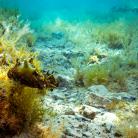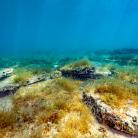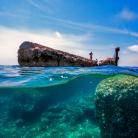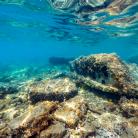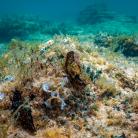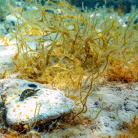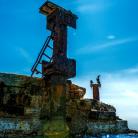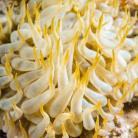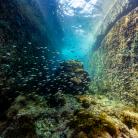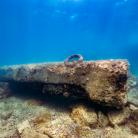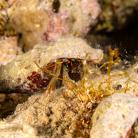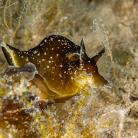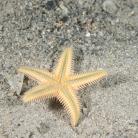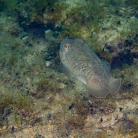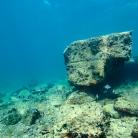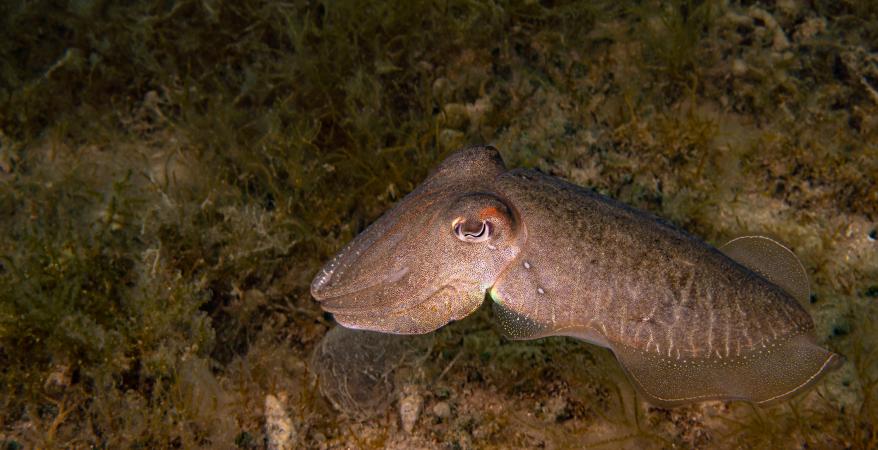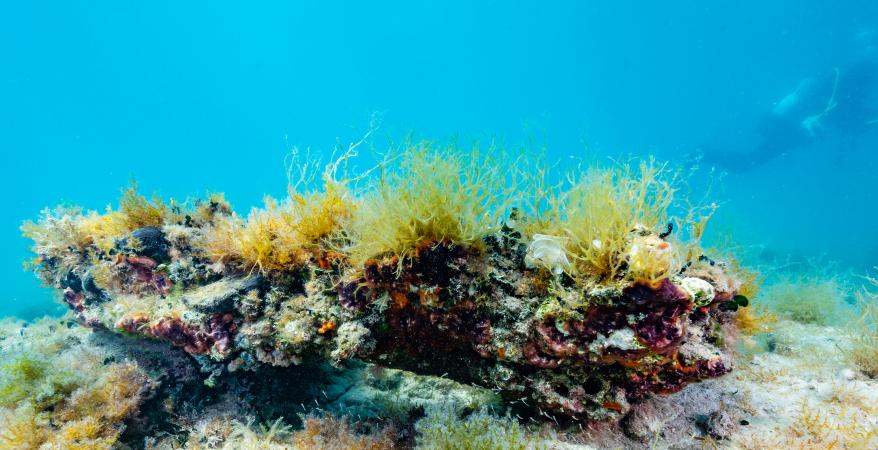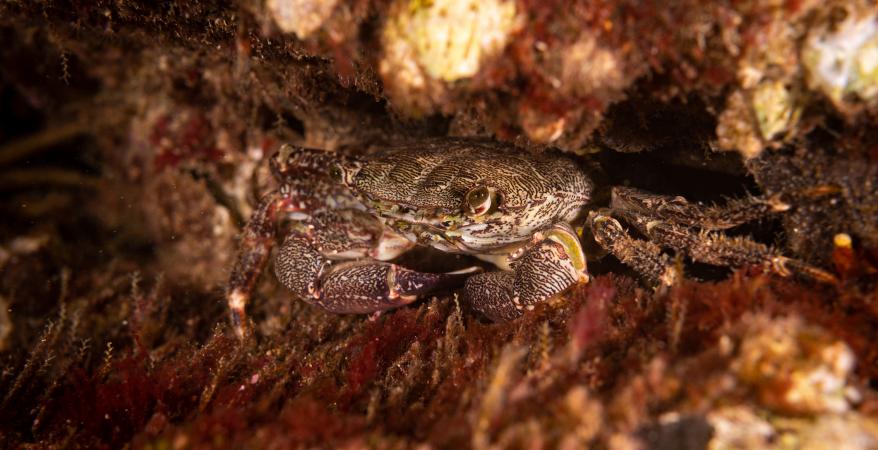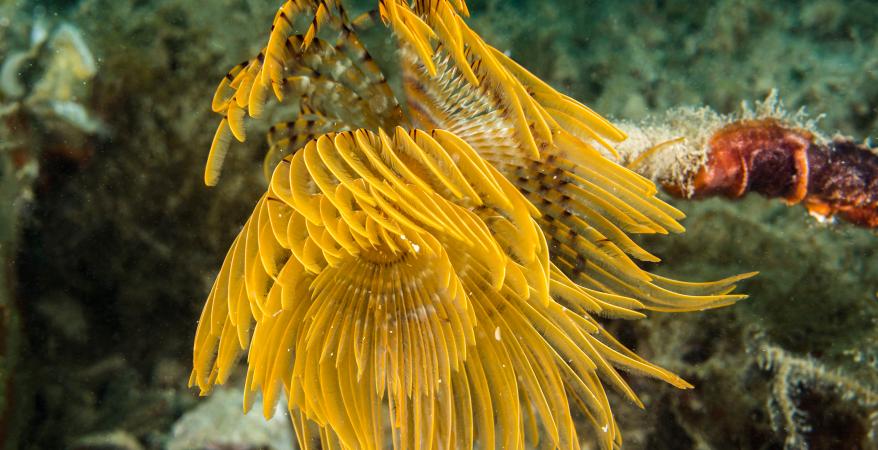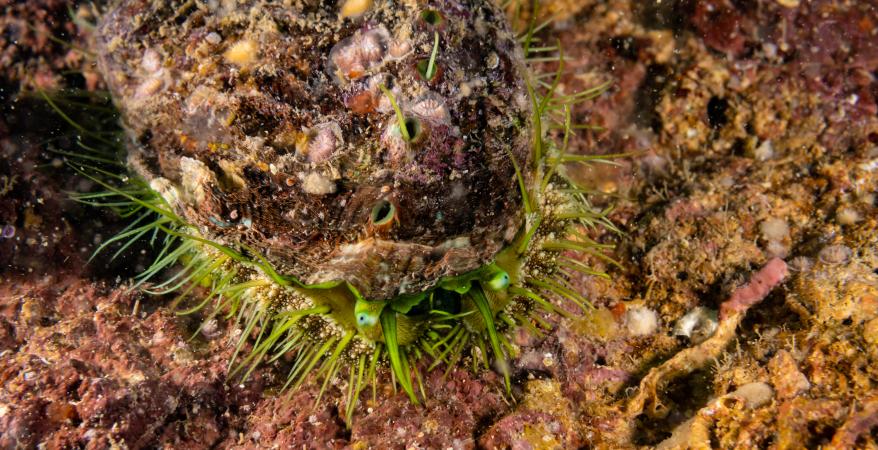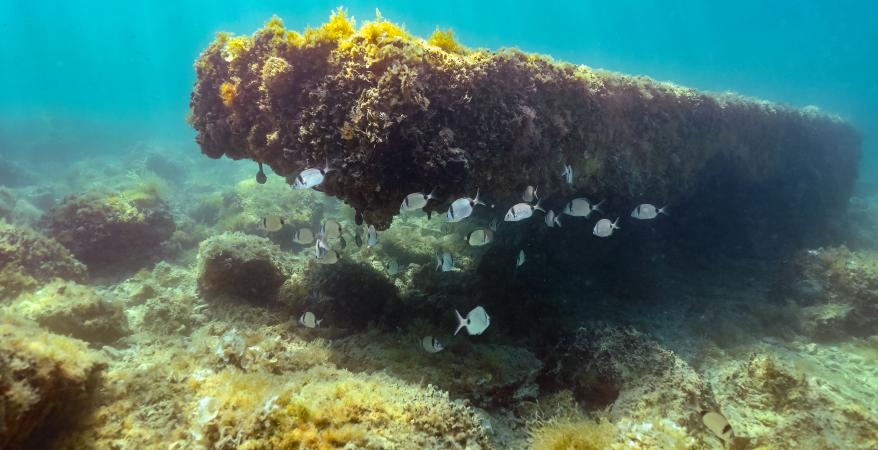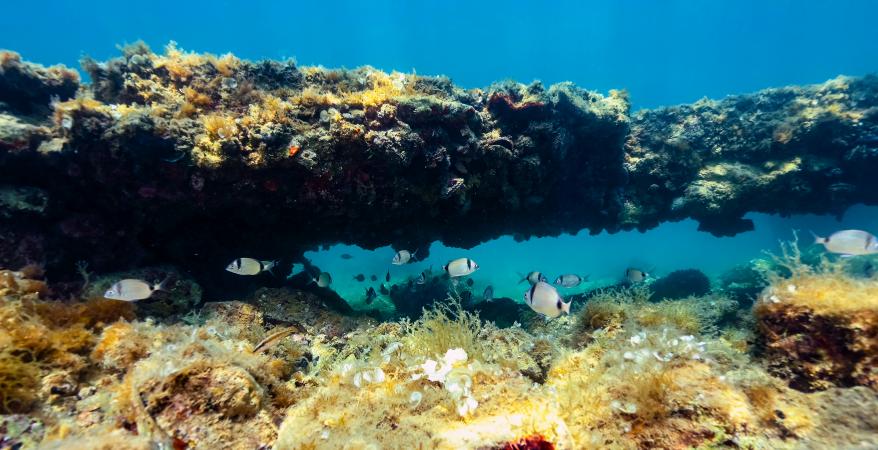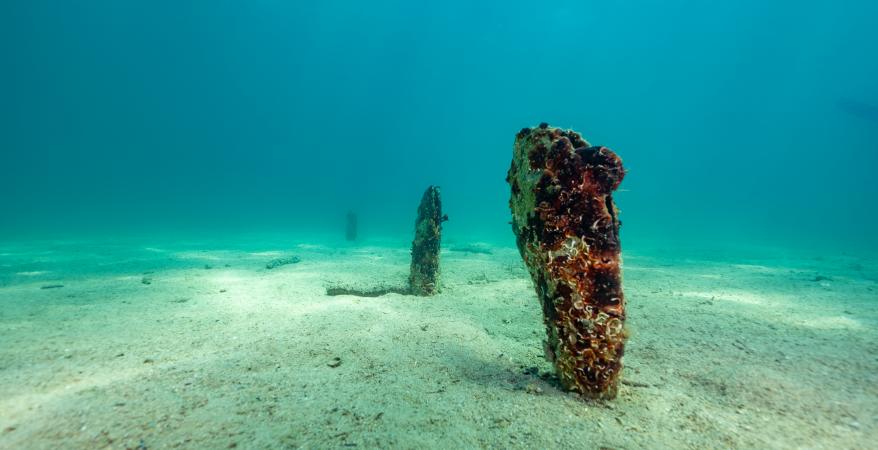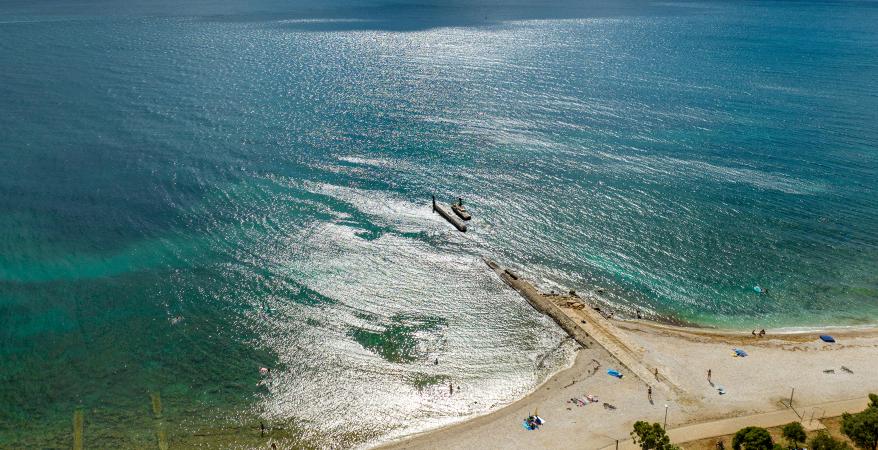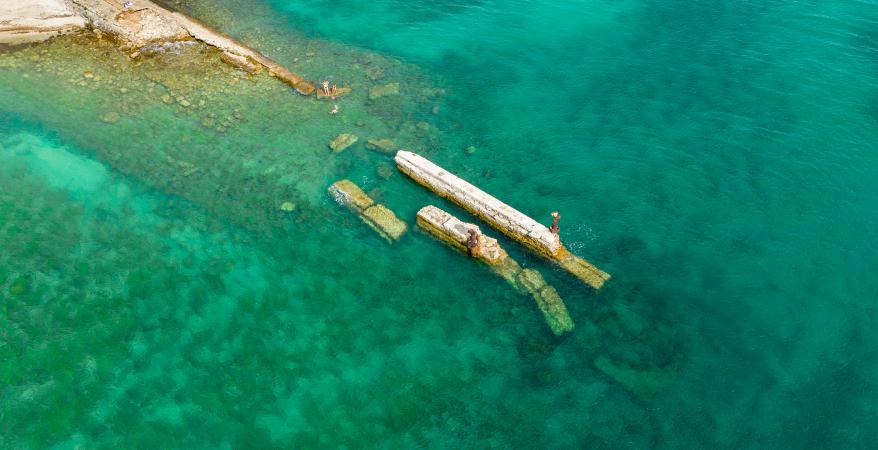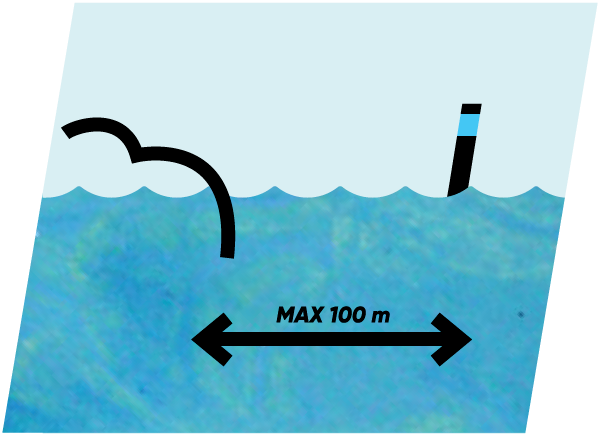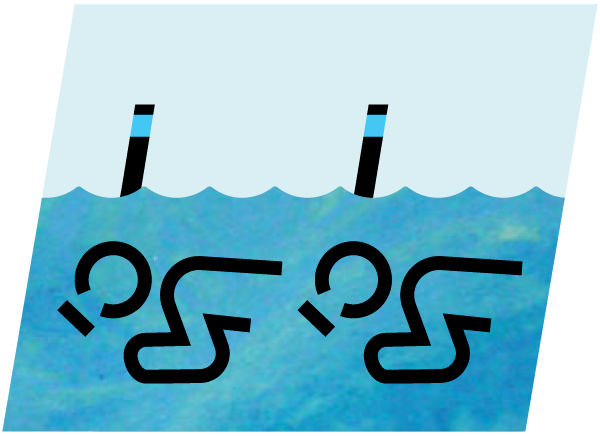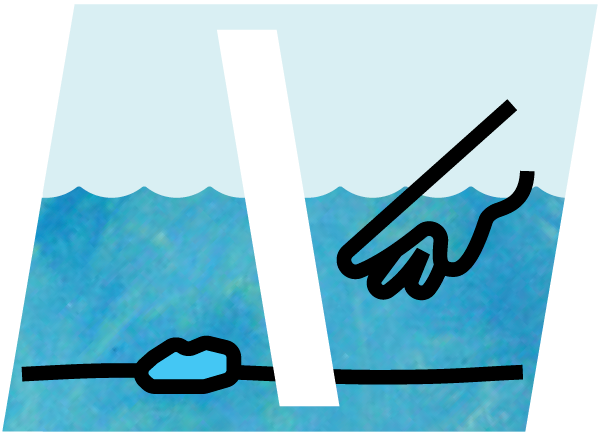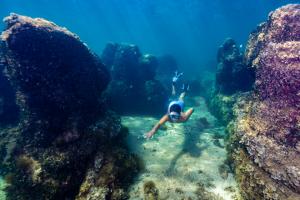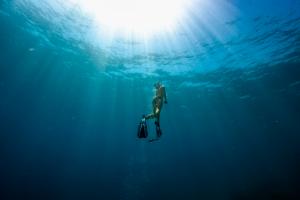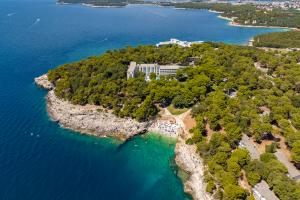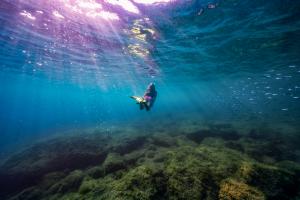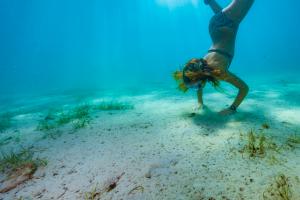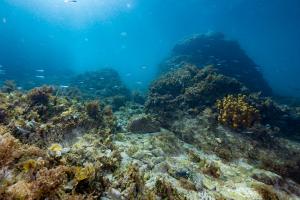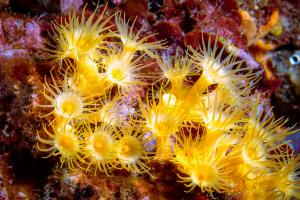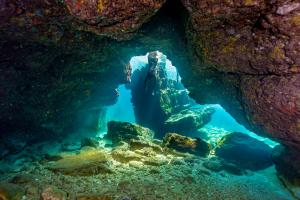Martulina
Vodnjan is easily found in the south of the Istrian peninsula because the bell tower of this charming town is the highest in Istria. This 60-meter tower modelled on St. Mark's in Venice has always shown a safe way to residents and travelers.
Vodnjan is some ten kilometers away from the coast and its settlements of Barbariga and Peroj, which are reached through landscapes characterized by olive trees and vineyards, along field stone houses, so-called kažuni. Martulina beach is located on the coastal promenade of Peroj. You can reach it by a slow 15-minute walk from the Portić bay or by car following the sign to Peroj beach.
Martulina is a pebble beach that is easily recognizable by the remains of the Austro-Hungarian pier sticking out of the sea. Seen from the promenade, near the children's playground, a single, wide-paved stone pier is visible, with half of its length collapsed. Some ten meters thereafter, two parallel piers emerge from the Adriatic, with iron pillars at their end, on the top of which there are small plateaus - lookouts. But the real curiosity is hidden under the sea.
The Martulina snorkeling location preserves the traces of the not-so-distant past that bear witness to the naval and military legacy of the Austro-Hungarian Monarchy in these areas. As Pula was chosen as the main war port of the Empire, in the mid-19th century a period of intensive construction of the fortification system, arrangement of anchorages, waterways and development of a modern navy followed.
As the Fažana Channel was an auxiliary anchorage, the best warships of the time, armored and equipped with heavy artillery, passed in front of this beach.
Due to the protection of the central war port of the Austro-Hungarian Navy, a unique defense system was developed in the wider vicinity of the Pula Bay, which, in addition to fortifications and batteries, also included the use of sea obstacles/barricades. This is the era of torpedo invention and the first submarines, so it is small wonder that anti-submarine protection was installed here during the First World War in the form of a steel net or a thick steel rope, stretching from Cape Mertulin, today's Martulina beach, to the islet of Mali Brijun and protecting the northern entrance to the Fažana Channel.
You can start exploring this interesting site from the collapsed part where two parallel piers face the Brijuni National Park with an average depth of 2 meters. Between them is a wide passage in which juvenile fish hide, and in the shadowy crevices of the pier it is possible to see the furred sponge crab that lives in a special form of a symbiosis with an orange sponge. It tears off the sponge from the bottom of the sea and disguises itself with it.
In the passage between the piers, you can peek under boulders where cuttlefish and groupers hide. One gap is particularly wide and resembles a blue window. In the horizontal cracks on the walls of the pier, you can also find tiny threefin blennies, which you will recognize by its black head, while its body can be yellow, orange or red. It is skillful in swimming upside down as well, and when it spreads its side fins, one can notice a white edge, its additional decoration. On the walls of the piers, you can notice the flat spirastrella sponge, which has developed a rarely bright red colour due to its shady location.
Parts of the ruined pier on the right side, looking towards the sea, are very interesting. If you go around them from the outer side, you will notice a large ring which was used for tying up the ships.
The most impressive part of this structure is the sunken quay located at the very end of the piers, only a few meters away. Today, it is decorated with large oysters, ordinary sponges and three large rings. Beneath it lives a diverse group of fish, such as the two-banded seabream, large specimens of peacock wrasse, some sharpsnout seabreams, damselfish and the painted comber. It is often visited by the sea bass, schools of mullet and the sea bream.
The surrounding bottom is marbled with small rocks. However, if you swim back along the larger pier you will notice on its outer side a sandy bottom featuring a variety of shellfish and snails such as the banded dye-murex, the green ormer, the cockle, the smooth clam and the starfish.
When you reach the shallows, you will be surprised by a large colony of sea hares. Here they spawn and graze. They can be yellow, light brown and darker in colour with spots. They belong to the order of the keelback slugs and have small folds on the top of their backs resembling wings which they use for sliding awkwardly through the water. If you scare them, they will release purple liquid with an unpleasant smell. Here you can also see other species of snails, such as the endemic dendrodoris snail. It is brown with a yellow or orange edge, and can grow up to 8-9 cm. The distinctly yellow tylodina with a small stunted shell often lives on the yellow sulphur turf that it feeds on. On Martulina one can also find a rarely seen thin spider crab with legs as thin as toothpicks.
Important notes
No matter how tempting it may seem, do not try to dive under the stone blocks or sunken quays, as this is dangerous.
By carefully observing the surrounding bottom, it is possible to find the remains of bullet casings and the remaining parts of the iron structure, but do not take them with you. They are a trace of the past that will delight every swimmer who finds them, and are there to kindle your imagination about the events long gone. Let your memory or a photo be a souvenir you take from this place so that new generations can enjoy the magic of the past as well!







